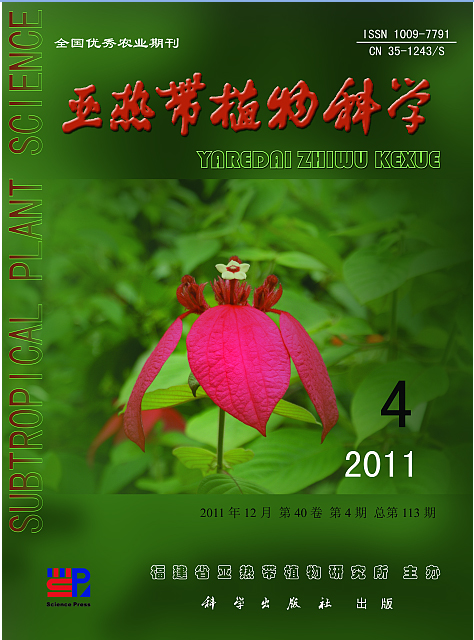|
|
Analysis of Genetic Diversity and Inter-specific Relationships of Lycoris (Amaryllidaceae) from China by SSR-PCR
YUAN Ju-hong
2011, 40(04):
1-7.
DOI: 10.3969/j.issn.1009-7791.2011.04.001
Genetic diversity and inter-specific relationships of Lycoris were analyzed by SSR-PCR technique. 46 SSR primer pairs were employed to amplify genomic DNA of Lycoris. 18 out of 46 SSR primer pairs which showed high polymorphism were used to detect genetic diversity and inter-specific relationships among 15 Lycoris species and Narcissus tazaetta var. chinensis as an outgroup in this study. The results indicated that the genetic diversity is high, and their percentage of polymorphic bands is up to 97.63% using the non-denaturing polyacrylamide gel electrophoresis and modified argentation. The 20 accessions were divided into four major groups by UPGMA clustering method. Group I included L. anhuiensis, L.1ongituba, L. longituba var. flava, L. aurea, L. chinensis, and L. albiflora. Group II included L. incarnata, L. squamigera, L. sprengeri, L. haywardii and L. rosea. Group III consisted of L.radiata, L. radiata var. pumila, L .straminea and L. houdyshelii. The N. tazetta L. var. chinensis was as an independent group IV. The molecular cluster result of SSR marker not only supports the likelihood hybrid origin of L. albiflora, L. squamigera, L. haywardii, L. houdyshelii and L .straminea, but also matched well with the results of chromosomal, karyotypical, and morphological classification. Except of L. albiflora, these species whose basic chromosome number similar or equal to x =11 and karyotypes including 11t or multiples were clustered together respectively, while other species whose basic chromosome number was not x =11 but with 6M+10T karyotypes were clustered together. The same species L. anhuiensis at different localities or L. longituba which has different flower color can be distinguished easily by SSR-PCR technique, and can also the morphological very similar species such as L. radiata and L. radiata var. pumila, L. aurea and L. chinensis. According to the results, we could conclude that L. anhuiensis as an independent species was not supported, it should be recognized as a variety or hybrid of L. longituba due to their very close relationships, and could provide reference for classification, especially germplasm identification, and the cross breeding of Lycoris.
References |
Related Articles |
Metrics
|
